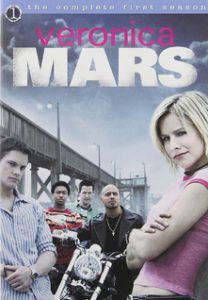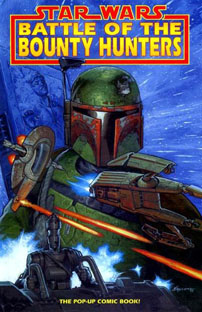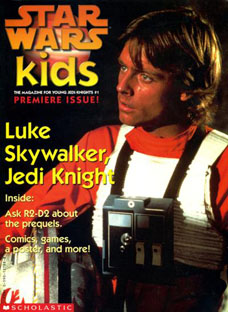Disney’s cancellation of the Expanded Universe earlier this year marked the first complete reboot of “Star Wars” lore, but there had been plenty of disagreements about canon among various media throughout the years. In 1997, with the release of the Special Editions in theaters, Lucasfilm aimed to draw a new generation of fans through Star Wars Kids magazine (1997-99). In the serialized comics that ran in each issue, the writers rebooted the timeframe between Episodes IV and V, at least for the purposes of these stories.
Most adult fans didn’t notice until the comics were reprinted: “Death Star Pirates” in “Star Wars Tales” Issue 8 (2001), and the other four – “The Rebel Thief,” “X-Wing Marks the Spot,” “Imperial Spy” and “The Gambler’s Quest” – in “Wild Space” Volume 1 (2013). While none of these yarns are essential by any means, they feature vibrantly colored art, our heroes are mostly in character (except that Leia is extremely hard on Han, always assuming the worst of him), and they have a curiosity value similar to that of the old newspaper strips. Indeed, the quality of the Star Wars Kids comics is at about Russ Manning level.
Here are some of the reimagined and/or surprising plot points:
- In Ryder Windham’s “The Rebel Thief,” we learn that Han returned his reward money to the Alliance. In the Marvel comics, he has the reward money stolen by the pirate Crimson Jack. This was later referenced in Timothy Zahn’s novel “Scoundrels.”
- Later in the story, using treasure found in a Massassi temple, Han pays off Jabba the Hutt through an intermediary. Jabba says it’s too late. In the Marvel comics, Jabba clears the debt when Han helps him, then reinstates it just before “Empire” (so the comics could square up with that movie, where Han is still hoping to pay off Jabba).
- In Mike W. Barr’s “X-Wing Marks the Spot,” the Alliance aims to acquire more X-Wings, and they do so from an undercover source. Arguably, this ties in nicely with the Rebellion’s need for astromech droids in “Darklighter.” One thing that is inexcusable, though, is having a T-16 skyhopper flying in outer space.
- In Barr’s “Imperial Spy,” our heroes depart the Yavin base just before Darth Vader arrives on the suggestion of an Imperial spy. In the Goodwin/Williamson newspaper strips, the Imperials blow up the base, presumably killing General Dodonna (we learn in “Dark Empire” and the “X-Wing” books that he was actually imprisoned) as the Rebel fleet narrowly escapes.
- Likewise, Henry Gilroy’s “Death Star Pirates” contradicts all other departure-from-Yavin yarns as it finds the Falcon and Luke’s X-wing ambushed by pirates among the Death Star debris. Luke loses his X-wing in the skirmish, so I guess it’s a good thing they got new ones in “X-Wing Marks the Spot.”
- Jumping ahead on the timeline, in Robert Rath’s “The Gambler’s Quest,” Lando passes a series of tests to get the skiff guard job at Jabba’s palace. This contradicts “The Bounty Hunters: Scoundrel’s Wages,” which coincidentally also finds Lando passing a series of tests (albeit different ones) to get the gig. (In the comedic “Skreej” from “Tales” Issue 10, Lando steals a skiff guard’s identity, and his job with it.)
The Star Wars Kids comics weren’t the first time Lucasfilm played fast and loose with continuity in kid-oriented stories. Heck, in the 45 rpm record adaptation of “A New Hope,” after Luke sees R2’s message from Leia, he simply travels to Ben’s house to ask him about it; the story skips the subplot of R2 running off in search of Kenobi. As a kid, I never gave it much thought, and I suppose kids in general are not continuity nitpickers.

The 1996 “Shadows of the Empire” multimedia project is another prime example: It told two differing stories of Boba Fett delivering Han Solo to Jabba the Hutt. In the six-issue “Shadows” comic, written by John Wagner, Fett barely survives a showdown with IG-88 above Tatooine, then regroups and finally delivers the carbonite slab after killing, tricking and sidestepping several bounty hunters.

In “Battle of the Bounty Hunters,” Dark Horse’s only pop-up comic, the encounter with IG-88 is the same, but then Windham departs from Wagner’s script and has Fett go directly to Jabba’s palace. Bib Fortuna tries to use a creature to kill Fett, but fails, and Fett delivers the prize.
In what have to rank as the most unnecessary “Star Wars” comics ever produced, a partial “Shadows” adaptation was produced in minicomic format for Galoob (part one) and Ertl (part two). It goes about halfway through the “Shadows” story and comes off as a rote summary of the plot more so than an action-oriented yarn. Perhaps it was supposed to be a tamer version of Wagner’s comic, or maybe the minicomic format necessitated the tweaked script and new art. These comics are collected in “Wild Space” Volume 1.
Although Wookieepedia lists the two “Shadows” specials packaged with Kenner action-figure two-packs (Vader vs. Xizor and Boba Fett vs. IG-88) as uncollected comics, this is a mistake: Both are merely reprints of part of the main “Shadows” comic. So they are of interest to people who collect variants, but not to those who seek distinct stories.
Every comic I listed above is only for completists. Discerning readers will want to stick with the adult stories of the classic trilogy era, as they are superior and accepted as canon within the Legends timeline.

